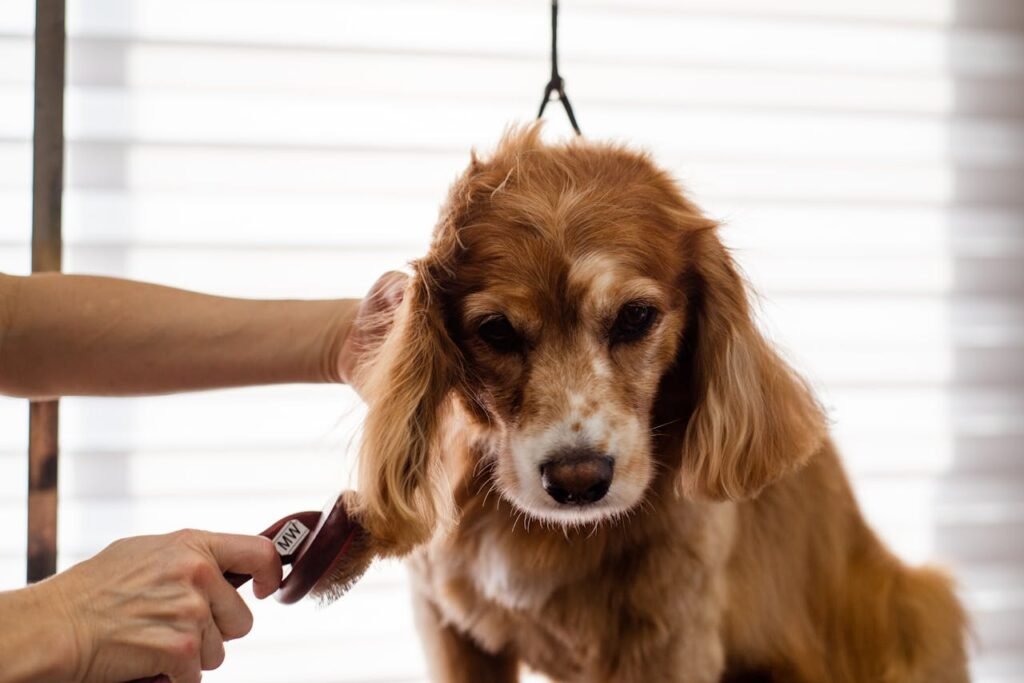5 Signs Your Dog May Have Separation Anxiety. Is your dog acting clingy or stressed when you leave? Discover 5 signs of separation anxiety in dogs & learn how To help your furry friend feel secure!
5 Signs Your Dog May Have Separation Anxiety
Sign 1: Excessive Barking or Howling
Excessive barking or howling frequently catches attention. Dogs experiencing separation anxiety often vocalize loudly when their owner leaves. This type of behavior might indicate distress. Barking serves as a cry for help, signaling loneliness & confusion. Owners should take notice if their dog only reacts this way during absences. This sign can escalate if left unchecked.
Some dogs may use variations in pitch & volume when expressing frustration due To separation. Others might display these vocalizations The moment they sense an owner preparing To leave. This anticipation amplifies anxiety, demonstrating a perceptible sensitivity To routines. Various methods exist To help manage this behavior.
Utilizing distraction techniques, like toys or treat puzzles, may alleviate anxiety. Engaging in pre-departure playtime can also reduce tension associated with separation. Owners should remain observant, noting if vocalizations persist even after attempts To address underlying issues.
Sign 2: Destructive Behavior
Destructive behavior often manifests when dogs feel overwhelmed by anxiety. Items around homes may become chew toys or The target of scratching. This signifies frustration stemming from being alone. Many dogs perceive this behavior as coping mechanisms, showing signs of stress manifesting through destructiveness.
Common items affected include shoes, furniture, or anything accessible. Notably, this behavior occurs when no one home, reflecting efforts To cope with solitude. Owners should assess whether destruction correlates with absence or includes other moments. Continuous destruction might indicate a need for intervention.
Providing alternatives such as chew toys or designated areas for play can redirect energy. Additionally, consult professionals if destruction escalates or persists. Strategies exist that promote healthier outlets for this behavior.
Sign 3: Pacing or Restlessness
Pacing or restlessness can reflect anxiety levels manifesting physically. Dogs exhibiting this sign may circle around furniture or continuously change positions. Anxious dogs struggle with finding comfort while alone. Owners watching closely can identify patterns of pacing linked with distress.
This behavior often escalates during pre-departure rituals. A dog might become restless as an owner prepares To leave, showcasing a clear connection between actions & anxiety. Taking time To calm a dog before leaving can help mitigate this behavior.
Encouraging relaxation through comfortable spaces or calming music can alleviate related issues. Establishing routines also assists in minimizing anxiety levels, providing security for dogs experiencing separation distress.
Sign 4: Loss of Appetite
Loss of appetite represents another troubling sign of separation anxiety. Many dogs refuse food when left alone, demonstrating emotional distress. This behavior often persists & can lead To severe health conditions if not addressed effectively. Owners should monitor eating habits, noting any changes in behavior linked with separation signs.
Stress impacts different dogs in various ways. Some may refuse treats or meals entirely, while others might nibble sparingly. Understanding individual behavior patterns helps pinpoint whether anxiety contributes To loss of appetite.
Gradually introducing feeding routines, incorporating comfort items, or remaining present during meals can foster a positive association. Over time, this may alleviate anxiety related To eating during separation. Owners should also research additional resources, such as those available at Humane Society, for more assistance.
Sign 5: Escape Attempts
Escape attempts can indicate severe anxiety in dogs. Many anxious dogs may attempt fleeing whenever feeling isolation or stress. This behavior stems from pursuing proximity To loved ones. Observing attempts To escape from homes or crates can highlight a deeper issue requiring attention.
Common signs include scratching at doors, windows, or chewing through barriers. These actions represent desperation, emphasizing a need for comfort. Owners often discover destruction linked with escape efforts, further illustrating anxiety’s impact.
Establishing secure environments can help minimize escape attempts. Providing engaging toys or puzzle feeders may distract attention from isolation. Professional advice might also aid in managing this behavior effectively, ensuring safety & well-being.
Feature List
- 🐶 Excessive Barking
- 💔 Destructive Behavior
- 🏃 Pacing or Restlessness
- 🍽️ Loss of Appetite
- 🚪 Escape Attempts
Sign 6: Urination or Defecation Indoors
Indoor urination or defecation serves as a common indicator of anxiety. Dogs may struggle with bladder control when experiencing overwhelming fear during separation. This behavior typically emerges in fully house-trained dogs, demonstrating a profound emotional response.
Notably, anxious dogs may soil areas as attempts at communication. This indicates distress rather than simply disobedience. Owners should recognize that this sign relates directly To anxiety levels rather than behavioral issues.
Implementing consistent bathroom breaks before leaving can ease fears contributing To this behavior. Encouraging positive reinforcement for appropriate bathroom habits helps re-establish control over eliminating indoors. Solutions often involve patience & ongoing training.
Sign 7: Clinginess or Velcro Behavior
Many dogs exhibiting separation anxiety demonstrate clinginess towards their owners. This “Velcro” behavior reflects an inability To be alone comfortably. Dogs may follow owners around constantly, unable To settle or engage in activities independently. This type of behavior signifies attachment stemming from anxious feelings.
Signs of clinginess often intensify during routine changes, signaling increased or escalating stress levels. Owners may witness dogs becoming anxious over simple tasks like showering or meal preparation. Many find it challenging To manage daily activities around a clingy dog.
Implementing gradual desensitization To absence can help alleviate clinginess. Creating safe zones for a dog within areas around homes fosters independence. Patience & consistency remain vital for modifying this behavior effectively.
Comparison Table of Signs
| Signs | Common Behaviors | Recommended Actions |
|---|---|---|
| Excessive Barking | Vocalization & howling | Engaging distractions |
| Destructive Behavior | Chewing or scratching | Providing chew toys |
| Pacing | Circling or restlessness | Creating calming spaces |
| Loss of Appetite | Refusal of food | Gradual feeding routines |
| Escape Attempts | Scratching or chewing barriers | Secure environments |
Personal Experience
During my journey with my dog, I encountered several signs indicating possible separation anxiety. My furry friend displayed clinginess, following me everywhere around my home. Often, I noticed excessive barking when I’d leave for even brief periods. These experiences prompted me To explore solutions that would help both my dog & myself find comfort & balance in our daily lives.
At different times, I found destructiveness in items around my living area. Furniture & shoes became chew targets, leading me To dig deeper into this issue. Destructive behavior was frustrating, but I understood that underlying feelings needed attention. I implemented various strategies To alleviate her distress effectively, from special toys To engaging distractions.
Over time, my dog’s transformation became evident. Understanding her unique needs & providing comfort enabled both of us To enjoy a more harmonious relationship. Today, she exhibits signs of confidence, less anxiety, & an undeniable bond, proving that with patience & understanding, resolution remains possible.
For additional insight & resources, please visit Haven for Pet Care.
Is your dog acting clingy or stressed when you leave? Discover 5 signs of separation anxiety in dogs & learn how To help your furry friend feel secure!

What are The common signs of separation anxiety in dogs?
Common signs of separation anxiety in dogs include excessive barking or whining when left alone, destructive behavior such as chewing or digging, & attempts To escape from confined spaces. Additionally, some dogs may exhibit signs of distress when they sense their owner is preparing To leave, like following closely or becoming clingy.
How can I identify if my dog is anxious when I leave?
You can identify if your dog is anxious when you leave by observing their behavior. Signs include pacing, drooling, or unusual behaviors such as urination or defecation in The house. If your dog is restless & seems unsettled when you’re preparing To leave, it can indicate underlying anxiety.
What should I do if I suspect my dog has separation anxiety?
If you suspect your dog has separation anxiety, it’s important To consult with a veterinarian or a professional dog trainer. They can help assess The situation & recommend behavior modification techniques or training exercises. Gradual desensitization To being alone & creating a comforting environment can also be beneficial.
Conclusion
Understanding your dog’s behavior is crucial To their well-being. If you notice signs like excessive barking, destructive chewing, or clinginess, your furry friend might be struggling with separation anxiety. It’s essential To address these issues early on, as they can affect both your dog’s happiness & your home life. Spend quality time with your pup, create a safe space for them, & consider seeking help from a vet or dog trainer if needed. Remember, with a little patience & care, you can help your dog feel more secure & reduce their anxiety when you’re not around.


